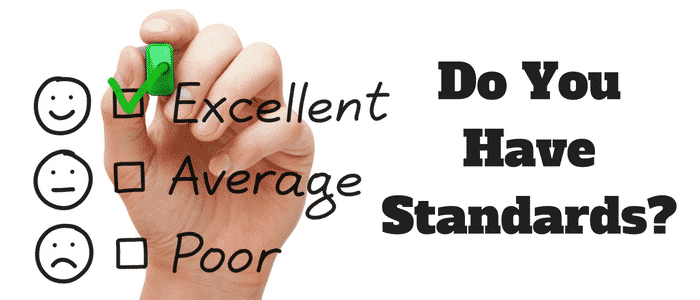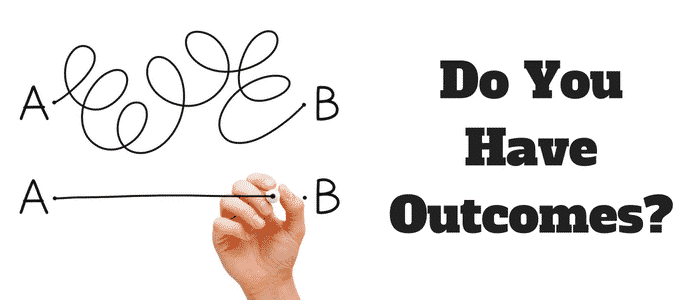
Aug 19, 2016
Ever had a feeling that you were using a lot of your paid working time getting things done which you really shouldn’t have to do? Because the person who should be doing them doesn’t know how to or doesn’t care or doesn’t know they’re supposed to be doing them?
Because the directions given to accomplish a certain task are not clear or responsibilities are poorly defined?
Ever patched something up because it simply wasn’t finished or good enough? Or felt that something could have, and should have been done better?
A job description, if there is one for your role, tells you what you’re paid to do- its part of the agreement you made with the company.
But poor planning, abdication of responsibility and shoddy work can lead to you “breaking” this agreement, doing other people’s work or creating outputs that are incomplete or defective.
This ubiquitous problem (I dare you to tell me you have never experienced this before!) is caused by the any of the following:
● Lack of clearly defined Standards
● Lack of clearly defined Outcomes
● Lack of clearly defined Boundaries
To make sure you are doing the work you are paid to do and avoid picking up someone else’s slack or pulling their weight you have to have, besides a detailed job description, clear standards, clear outcomes and clear boundaries.
What Are Your Standards?
Standards are all about the “how do you know” that a task or a project is completed, in the right way, according to expectations and fit for purpose.
You could call standards by many other names, criteria or benchmarks or yardsticks, but they all amount to the same: a clear and common understanding of what needs to be done, how well it needs to be done, to which extent and specification, so a job can be considered completed and delivered as per the spec.
Standards show clearly:
● If something needs to be done exactly at a certain time or if some slippage is allowed.
● If it needs to be at a high polish or if 95% is acceptable too.
● How many bells it needs to have if any.
● Which whistles are expected, or not for that matter.
When someone sends you meeting minutes full of typos and misleading grammar (yes, grammar IS good for something!) or presentation slides full of spelling mistakes (there’s always someone in the room who notices them) then the job is not done.
If a paper has to be delivered early so it can be reviewed and it only arrives just in time for the meeting, then the job is not done.
If someone promises to deliver an output by a certain time and they don’t, then the job is not done.
Standards tell you when it’s done. But standards are not only about getting it done!
As long as they only describe a pass/fail they’re not doing us an important service: to show us what success and excellence mean.
In order to have successful projects, businesses and careers we need to know what the standards for excellence are as opposed to just getting the job done.
Who needs to define clear Standards?
Leaders must set these standards. If they fail to do so then the people working for them are left to their own devices and may or may not deliver a great project or create a well-working business.
Great leaders communicate clearly how you can be successful, and even outstanding, at your job. Without such standards, it’ll be a hit and miss. You might be doing your best and have no idea that your best needs to be, and actually could be much more.
Of course once you open your eyes and start looking for standards of excellence you can find them in the team you are working with as well, your peers or people you worked with previously, in articles and books or at home.
Wherever you find them, you need standards not only to complete work so you’re a valuable member of your team and the business you’re working for but also to be outstanding and make a difference.
Standards not only ensure we do the work we’re paid to do, but they also lift our game!
What Are Your Outcomes?
Let’s just yell it from the rooftops: AS LONG AS THE EXPECTED OUTCOME IS NOT CLEAR YOU MIGHT AS WELL NOT START!
Have you heard of trying to hit a moving target? It’s possible, but the odds are not in your favour and it takes a lot more effort than when a target is clearly in your sights right there for you to take aim at.
As long as you’re unclear about an outcome you cannot know when a task will be completed and a goal will be achieved.
If you want to be sure that an outcome has been defined clearly you look for the following:
Evidence
How do you know that you have achieved an expected outcome? What’s the Evidence? The quality of the outcome connects back to the standards we have already discussed, but how will you know you have reached the goalpost, to begin with? What will be present when you have have achieved that outcome?
Emotion
How will you feel as a result of having that outcome? Are you going to feel accomplished, clear, calm, strong? Emotions set us in motion and they keep us moving towards an outcome, even when the going gets tough. If you know how you will feel about achieving a certain outcome you’ll have plenty of fuel to get there.
Contribution
What will this outcome contribute to the bigger picture and what’s its ultimate benefit? What can happen when this outcome is achieved and what can’t happen without it? Being clear about how an outcome supports the realisation of a larger enterprise makes you see how each cogwheel is an indispensable part of the machine and will allow you to make use of helpful synergies and avoid wasteful overlaps.
If you’d like to know more about defining outcomes clearly click here to watch a video where Alice takes you through her Outcome Clarity Map, showing you how to make sure that your outcomes drive your success, rather than slow you down or push you away from your goals.
Who needs to define clear Outcomes?
The person who receives and judges your output; you could think of them as your “personal” customer.
If the expected outcome is not clear to you from the outset then keep asking questions (see above) until it is, and if someone can’t explain what they’re after then they might as well not get it (I know that sounds harsh, but really, think about it!).
To paraphrase Alice and the Cheshire Cat:
“Would you tell me, please, what exactly it is I need?”
“That depends on a good deal on what you want to use it for,” said the Cat.
“I don’t much care what —” said Alice.
“Then it doesn’t matter what you’ll get,” said the Cat
Great leaders communicate expected outcomes clearly because they know what the endgame looks like and how the smaller pieces fit together to create the bigger picture. They are able to go down to the detailed level, see what’s required and describe that in a way so others can execute and deliver.
Outcomes not only ensure we do the work we’re paid to do, but they also help us stay motivated and make sure we’re moving in the right direction!
What Are Your Boundaries?
Boundaries define what you are expected and prepared to do at work (see your job description, making allowances for keenness and showing the right team spirit), and which you defend, politely but firmly, if someone crosses them.
They are necessary because they communicate clearly what you are expected to do and what is not part of your role, how your skills and energy are best used to support the goals of the organisation and how they shouldn’t be used because it’s someone else’s responsibility or not to be done at all.
You need boundaries to define what you need to do and to make sure you have the means for doing it.
They exist in four dimensions:
Time
Boundaries need to be set around the time you have to accomplish your tasks. Firstly in terms of making sure you are given enough time, typically through deadlines, and secondly you must allot time to yourself so you can get the job done. Time is a resource which are both given and have to manage yourself.
In addition to this, you’ll find that certain times of day lend themselves more to certain types of tasks than others. Ask yourself: when do you feel most focused during your day, morning, afternoon or evening? When do you feel most creative? Once you have your preferred time slots for work that demands energy and concentration move repetitive and easy tasks to your “down” times.
Space
Boundaries have to exist around the physical space you are doing your work in. Where do you get your work done, who comes into your working space, what does the physical environment look, sound and feel like? Some work we do benefits from a highenergy environment whereas other times we’d rather work by ourselves.
Considering a variety of tasks you typically have to complete throughout the day, which ones are best done surrounded by other people or all by yourself in a peaceful and quiet environment? What should your desk and your screen ideally look like and do you benefit from frequent short-term distractions or do you need extended periods of reflective time?
Our youngest daughter used to do her homework while watching Youtube and keeping several Facebook conversations going at the same time and she did all of that (including her homework) very successfully. Clearly not everyone’s cup of tea, but horses for courses, right?!
Matter
This is where it all should start, really: your job description. All the things you are expected to say yes to (enthusiastically if you please!), and implicitly describing what shouldn’t be done by you.
At their best it gets everyone, most importantly you and your boss, on the same page about what’s expected from you in regards to you your input to the organisation and the output you need to produce, and is referred back to throughout your time with the company and updated according to additional responsibilities you take on and new skills you develop.
Sadly, this pretty much never happens. Typically you are hired under a box in an org structure bearing a three word description, and no one bothers to communicate and discuss with you a detailed job description relating to your actual role which hasn’t been written just to satisfy HR compliance. And that’s a shame, because this would be an excellent starting point for the discussion of standards, outcomes and boundaries.
Energy
The contribution from others, including your boss, is crucial to the overall success of a project or business and has to be done in a way that helps you do your job and doesn’t slow you down or set you back.
Reports delivered with grainy images? Slides with too much text in too small a font? Typos in the meeting minutes? Input provided too late or not at all?
Sure, you can fix all that but if you do someone else’s job for them they’re not going to thank you, and worse, they won’t be changing their ways because they don’t get any feedback.
Let them know what needs to be done to improve and let them make the improvements.
Who needs to define clear Boundaries?
The person you are going to be working for has to provide the job description, and the rest is up to you. You may not always be able to get exactly what you want or need in terms of time, space and energy, but you have to ask and stand up for it.
Equally, you have to make it clear (politely and firmly, and always remember it’s best to lead by example!) that you expect everyone else to follow standards that allow you to produce your best work and be most effective.
Don’t expect anyone else to defend your boundaries because they’ll have to stand their own ground. Boundaries not only ensure we do the work we’re paid to do, but they also help us do our best work and put our skills to the best use.
Standards, Outcomes, Boundaries
These three will help you do the job you’re paid for, and not only do it well but outstandingly well.
Clear standards so you can deliver consistently excellent work, clear outcomes to make sure that this work is effective and in the right context and clear boundaries to enable you to bring your best game every day.
Alice Haemmerle, on whose knowledge and experience as an executive coach and Master Trainer of Neuro Linguistic Programming this blog post is based on, is the creator of the Instant Insight Communication Systems (coaching systems using the different filters and internal strategies that are in play when we work, communicate and relate to each other) and The Communication CodeTM (showing you how to decode someone’s communication, motivation, decision making and problem solving styles).
Her husband Thomas Haemmerle has written this post.







